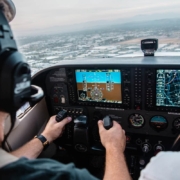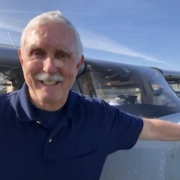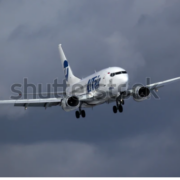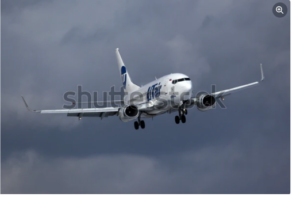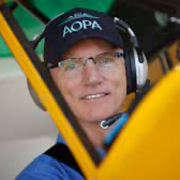AirVenture 2024!
/0 Comments/by John MahanyDateline Oshkosh Wisconsin & AirVenture
EAA AirVenture 2024 is underway! Under clear skies, EAA AirVenture Oshkosh got underway on Monday. I was up at 5am to make sure I was there in time. I am staying about 25 miles away in the dorms at Ripon College this year. The UWO dorms were full.
Monday was my day to just see as much of it as I could see, because starting Tuesday I will be volunteering for 2 organizations, SAFE and FAN. SAFE is the Society of Aviation and Flight Educators, of which I was a founding member, back in 2009. FAN is the Florida Aviation Network, which is a non-profit aviation media organization that I got involved with about 10? years ago. They arrange for me to get media/press credentials and admission to the convention.
This week it is expected that over 600,000 people will attend! There is so much to see, with over 10,000 aircraft parked on the grounds, as well as seminars, workshops, aircraft doing fly-bys, along with nearly 800 exhibitors, and more. And a daily air show that starts at 3pm each day. You simply cannot take it all in! The event planners outdo themselves every yea! And EAA also has a number of trams that provide transportation around the grounds, driven by volunteers. There are over 5,000 volunteers that make AirVenture happen.
According to the health app on my iPhone, on Monday I walked over 17,000 steps, just over 7 miles! Easy enough to do. The flight line, all of the rows of parked aircraft, is more than 5 miles long!
It’s a busy, fun week, connecting with fellow aviators from all around the world. I’ve been to AirVenture as it is now called, at least 25 times, and there’s something new to see every year. It never gets old!
Fly safely,
John
How to hire the best CFI for you
/2 Comments/by John MahanyYou want to learn to fly? Great! But what is the right way to go about finding a good instructor?
Like any major purchase or investment — which this is — you want to do your homework.
Seriously — some people don’t and they later regret it.
I’ve been a CFI for over 40 years now, so I’ve seen both the good and bad. Don’t be like so many other student pilots and just go along with whoever is next on the roster. Do your research.
Click Here to read the full article at General Aviation News
John Mahany earns his Master CFI Designation for the 8th time!
/by John MahanyCrosswinds, anyone?
/by John MahanyIts springtime! Windy, gusty days are here, and the weather patterns are changing while we go from winter to summer weather. Do you hate trying to land on windy days with crosswinds? I used to! So you are not alone
Yep, back when I was learning to fly, crosswinds were a BIG challenge to me in the Cessna 150 that I was flying. Lots of work, and lots of over-controlling and bad bounces trying to get it right, cross controlling with the ailerons and rudder! It was a real challenge, especially on a narrow runway! I scared myself many times!
I was over controlling of course, hands (ailerons/elevator) and feet (rudders) out of sync and bouncing down the runway!?! Oh my!! My first crosswind landings were ugly!! Maybe controlled crashes would be a better description. Fortunately, the Cessna 150 has very sturdy, forgiving landing gear, and it took the punishment well. Oh yeah. It took time to figure them out. But, I survived and eventually figured out the technique!! Now I use it on everything that I fly, adapting as necessary on the wide variety of aircraft I have flown over the years.
So, how do you feel about crosswind takeoffs and landings? Maybe you try to avoid them. Many pilots do. Takeoffs seem to be easier. Landings are a challenge, depending how strong the winds are and what you are flying. Every airplane will be a bit different.And, guess what? Crosswind landings are discussed in the March 2024 issue of Aviation Safety (AS) Many pilots have trouble with crosswinds. They don’t get enough regular practice. ‘AS’ calls it crosswind authority! In other words, are you using enough of the airplanes ‘control authority’, which means are you using the rudder enough?
So, how do you know if you have a crosswind? Easy enough. Either the ATIS or ASOS/AWOS will be reporting the winds, and the windsock will show it as it stands straight out and moves with the wind. And you can watch the airplane ahead of you on final, if there is one, to see how it is doing. And when on final approach, the airplane will not stay lined up with the runway. It will be drifting off to the downwind side, with the wind. So, your challenge is to stay lined up with the runway on final, correcting as needed.
Some days it takes constant small corrections. Just depends. Then, when you finally get into the flare, I personally maneuver so as to line up on the upwind 1/3 of the runway, with a bit more speed than normal, and when I am in the flare, with speed dissipating, the airplane will be drifting towards the centerline, and I am applying aileron INTO the wind as needed, and opposite rudder as needed, in an attempt to stay lined up over the centerline. And I apply enough forward pressure, as needed on the yoke, and carry enough power as needed, to keep control, and then try to apply enough upwind aileron to have the upwind tire touch down first, then roll out slightly to the opposite side to lower the downwind tire onto the runway, and finally lower the nose to get it firmly on the runway and tracking straight, before applying the brakes.
Notice I keep saying, ‘as needed’ above, for everything. That is because, you have to constantly adjust the flight controls and throttle during a crosswind landing. It can be different every time. Lots of corrections, as needed!
And I also use a lesser flap setting, 0, 10 or 20 instead of 30 degrees. Less flaps gives you more speed and more control, which is what you want in a crosswind landing, depending how strong the crosswind is.
There. That’s a lot but it is a busy-few-seconds while you do this and keep control. No time to look inside. You are looking outside and taking it all in, and are ‘dancing on the controls’ as they say, whatever it takes! After a while, with enough (lots of) practice, it will get easier. I am not sure if I could describe it any better. This is just from my having done/practiced 1000’s of crosswind landings, literally, over 4 decades of flying, in many different aircraft.
Do you need help with crosswind landings? Get in touch with me and let’s schedule some crosswind landing practice in the airplane you are flying! Good luck!
Fly safely,
John.
A Tribute to Richard McSpadden – RIP Richard
/by John MahanyOn Sunday, October 1, 2023. Well-known general aviation pilot and educator Richard McSpadden ‘flew west’, quite unexpectedly. Richard had most recently served all of GA in his role as Sr. VP., AOPA Air Safety Institute, (ASI).
He and another pilot, former AFL football player Russ Francis were departing Lake Placid, New York, KLKP, in a single engine Cessna Cardinal 177RG, and shortly after takeoff the aircraft developed some kind of problem, and apparently they tried to turn back, and crashed short of the runway. Both died on impact. A tragic loss for all.
Richard was actively involved in the general aviation community, as pilot and educator. Before joining AOPA, in 2017, Richard had had 2 previous careers. He first spent 20 years in the USAF as a pilot, and during that time had become the Lead pilot for the Thunderbirds, the Air Force aerial demonstration team. And then after he retired from the Air Force, he worked in the IT industry for several years, before leaving that to join AOPA, in 2017.
Richard was well known in the general aviation world because he was actively involved. He was not ‘stuck in the office’. Instead, he participated in several general aviation organizations. He traveled and spent time in the field, as part of his work in support of aviation safety. He also wrote columns for AOPA’s Pilot Magazine. And he produced content for the AOPA Air Safety Institute’s YouTube channel. In fact, recently he was making videos offering commentary on some recent accidents, for both piston and turbine aircraft.
I had met Richard a few times while at AirVenture over the past few summers. He was always easily approachable, very personable, and there was great camaraderie with him. And he was the guest speaker in 2022 at the annual SAFE Dinner, an organization of aviation educators, of which I am one of the founding members, back in 2009. Through his work with the Air Safety Institute, he made a difference in all of our lives as pilots. Godspeed, Richard. You will be missed! Condolences to the families.
Fly safely,
John
Do you know the new ATC equipment code suffix for your airplane?
/by John MahanyI bet maybe you don’t. I thought I did, until recently. Did you know that the ATC equipment code suffixes have changed? Yup, they have! In fact, they changed about 4 years ago, in 2019! I’m talking about the suffixes, like /T or /U or /G ‘codes’ that we used to use for our avionics capability when talking to ATC or when filing a flight plan, as in, a Cessna 150/U? Well, it has changed.
So how did I learn this? Well, I have been aware of it, but I have not been using the new codes, not when flying my Cessna 150. No ATC controllers at SoCal have said anything to me. Nor any of the briefers at LEIDOS, when I have called many times for a weather briefing.
However, recently when I called Leidos, 1-800-wxbrief, for a standard weather briefing, when I initially told the briefer that my Cessna 150 was a ‘/U’, boy he called me out for this and went on a RANT! He spent several minutes reprimanding, like I shoulda known better, oops, and spelling it out in some detail, and all I could say was, sorry, I goofed. No point in arguing. Mea culpa. Yep. But gee, last summer, when flying my Cessna 150 2/3’s of the way across the country to Oshkosh for AirVenture, not one briefer made any mention of this. Hmm. Well, that’s just the way it is.
 So, what’s behind this? Well, as I see it, this is due to the introduction of so many new avionics units/devices on the market in recent years; by several manufacturers, and because of so many different GPS receivers now. And, also because of the many newer displays (glass cockpits) and transponders now, and the varying capabilities of each, the FAA has had to ‘recategorize’ avionics, according to what each does. That’s how I see it. E gads! Hard to keep up.
So, what’s behind this? Well, as I see it, this is due to the introduction of so many new avionics units/devices on the market in recent years; by several manufacturers, and because of so many different GPS receivers now. And, also because of the many newer displays (glass cockpits) and transponders now, and the varying capabilities of each, the FAA has had to ‘recategorize’ avionics, according to what each does. That’s how I see it. E gads! Hard to keep up.
So, do you know the codes for the airplane you fly? It depends on what avionics you have. Have you seen the FAA form that sort of ‘explains’ this? In the AIM, the ‘flight planning form’ is in the back, in Appendix 4. At the beginning of the Appendix are several pages of explanations. Officially, it’s FAA Form 7233-4-International Flight Plan.
I find it to be confusing! Maybe because I’ve been using the old flight planning form for so long. So, I’ll try and explain a little of it. Very briefly. With thanks to Richie Lengel, and his very popular book ‘Everything Explained for the Professional Pilot’….; instead of the suffix U which was for Transponder with Mode C Altitude Reporting and no DME, if you are flying a single engine airplane, with ‘standard avionics’ including NavCom with VOR/ILS and VHF communications, like many of us, then your equipment code/suffix is now ‘S’. And for the transponder code, now there are three choices; A, C or S. For my 150, it’s now code C. There’s MUCH more to this. But I can see I’m going to have to work on creating a pamphlet to explain this, in more detail, and better.
That’s all for now. I have my work cut out for me.
In the meantime, fly safely!
John

